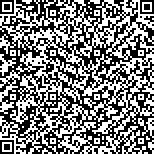| 本文已被:浏览 921次 下载 703次 |

码上扫一扫! |
|
|
| 不同光照对脊尾白虾生长、消化和非特异性免疫相关酶活力的影响 |
|
柳森1, 江海仪1, 秦峰1, 胡吉卉1, 赖晓芳1,2,3, 张庆起4, 高焕1,2,3
|
|
1.海洋科学与水产学院 江苏省海洋生物资源与环境重点实验室, 江苏海洋大学, 江苏 连云港 222005;2.江苏省海洋生物产业技术协同创新中心, 江苏 连云港 222005;3.江苏省农业种质资源保护与利用平台, 江苏 南京 210014;4.连云港赣榆佳信水产开发有限公司, 江苏 连云港 222100
|
|
| 摘要: |
| 为了探讨光色对水生生物生长和免疫的影响,本实验研究了5种光照环境对脊尾白虾(Exopalaemon carinicauda)生长、消化和非特异性免疫相关酶活力的影响。结果显示:(1)全光谱组的增重率(WGR)(63.76%±0.34%)、特定生长率(SGR)(1.63%±0.03%)和存活率(SR)(61.11%±1.92%)均显著高于其他4种光色(P<0.05);(2)绿光组的糜蛋白酶活力(4.02 U/mgprot±0.38 U/mgprot)最高;全光谱组的α-淀粉酶(α-AMS)活力(213.95 U/mgprot±16.30 U/mgprot)最高,与绿光组和黑暗组之间差异不显著(P>0.05);黄光组的脂肪酶(LPS)活力(19.21 U/gprot±2.53 U/gprot)最高,与黑暗组、绿光组和蓝光组之间差异不显著(P>0.05);(3)绿光组的总超氧化物歧化酶(T-SOD)活力(33.26 U/mgprot±7.08 U/mgprot)和总抗氧化能力(T-AOC)活力(2.31单位/mgprot±0.23单位/mgprot)均最高,与全光谱组之间差异不显著(P>0.05);全光谱组的过氧化氢酶(CAT)活力(17.27 U/mgprot±1.58 U/mgprot)、酸性磷酸酶(ACP)活力(27.10金氏单位/gprot±3.25金氏单位/gprot)和碱性磷酸酶(AKP)活力(74.26金氏单位/gprot±5.16金氏单位/gprot)均最高;黄光组的溶菌酶(LZM)活力(485.48 U/mL±36.85 U/mL)最高。结果表明:本试验规格的脊尾白虾生长和非特异性免疫能力在全光谱下最好,消化能力在绿光下较好。本研究可为脊尾白虾生长与免疫机制的基础理论研究提供参考依据。 |
| 关键词: 脊尾白虾(Exopalaemon carinicauda) 光色 生长 消化 非特异性免疫 |
| DOI:10.11759/hykx20210209001 |
| 分类号:S968.22 |
| 基金项目:国家重点研发计划资助("蓝色粮仓")(2018YFD0901302);江苏省优势学科建设工程资助项目;江苏海洋大学江苏省海洋生物资源与环境重点实验室开放课题基金资助(SH20191203);江苏省研究生科研与实践创新计划项目(SJCX20_1271) |
|
| Effects of different illumination on the growth, digestion, and nonspecific immune-related enzyme activities of Exopalaemon carinicauda |
|
LIU Sen1, JIANG Hai-yi1, QIN Feng1, HU Ji-hui1, LAI Xiao-fang1,2,3, ZHANG Qing-qi4, GAO Huan1,2,3
|
|
1.College of Marine Science and Fisheries/Key Laboratory of Marine Biological Resources and Environment of Jiangsu Province, Jiangsu Ocean University, Lianyungang 222005, China;2.Jiangsu Marine Biological Industry Technology Collaborative Innovation Center, Lianyungang 222005, China;3.Jiangsu Provincial Agricultural Germplasm Resources Protection and Utilization Platform, Nanjing 210014, China;4.Lianyungang Ganyu Jiaxin Aquatic Products Development Co., Ltd., Lianyungang 222100, China
|
| Abstract: |
| To investigate the effects of light color on the growth and immunity of aquatic organisms,the effects of five light colors on the growth,digestion,and nonspecific immune related enzyme activities of Exopalaemon carinicauda were studied.The results showed that the (1) The weight gain rate (63.76%±0.34%),specific growth rate (1.63%±0.03%) and survival rate (61.11%±1.92%) of the full spectrum group were significantly higher than those of other groups exposed to other four light colors (P<0.05).(2) The chymotrypsin activity (4.02±0.38 U/mgprot) of the green light group was the highest.The α-amylase (α-AMS) activity ((213.95±16.30) U/mgprot) of the full spectrum group was the highest and was not significantly different from that of the dark group (P>0.05).The lipase activity (19.21±2.53 U/gprot) of the yellow light group was the highest and had no significant difference with that of the dark group,green light group,and blue light group (P>0.05).(3) The total superoxide dismutase activity (33.26±7.08 U/mgprot) and total antioxidant capacity activity (2.31±0.23 units/mgprot) of the green light group were the highest and had no significant difference with those of the full spectrum group (P>0.05).The activities of catalase (17.27±1.58 U/mgprot),acid phosphatase (27.10±3.25 Kim's units/gprot),and alkaline phosphatase (74.26±5.16 Kim's units/gprot) of the full spectrum group were the highest.The lysozyme activity (485.48±36.85 U/mL) of the yellow light group was the highest.The results indicate that a full spectrum is the best for growth and nonspecific immunity,and the green light is the best for the digestion ability of E.carinicauda.This study can be a reference for basic theoretical research on the growth and immune mechanism of E.carinicauda. |
| Key words: E. carinicauda light color growth digestion nonspecific immunity |
